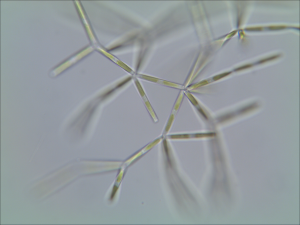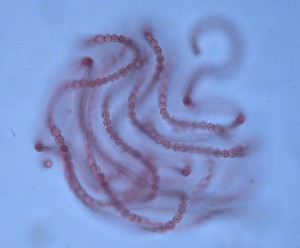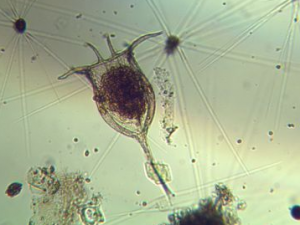General information about plankton
The waters encompass an unexpected amount of tiny plants


and animals.


Plankton as a word means drifting in the water. This word originates from Greek word “planktos”. The old Finnish word for plankton is interestingly enough “Keijusto”.
The phytoplankton can be divided into many different groups: e.g. green algae, golden algae, diatom, dinoflagellate and blue-green algae. The blue-green algae are scientifically classified as bacteria but since they resemble algae largely, they were classified as algae in the earlier plankton research. The most correct name for these would-be cyanobacteria.
The zooplankton consists of multiple groups as well: the most important ones would be rotifers, cladoceras and copepods.
In the same way, as on the earth the plants grow using the energy from the sun, taking the needed nutrients from the surrounding water – they are producers aka autotrophs. Zooplankton in turn is either herbivore or carnivore which makes it a heterotroph.
If the plants receive the needed nutrients, they grow, just like their colleagues on earth. If there are enough animals, the growth of the plants will be slowed down. If the aquatic environment changes in terms of nutrients or other environmental factors, the change is seen quite rapidly in the algae and slightly slower in zooplankton, and as a consequence in the fish. If there are lot of nutrients so-called algae blooms occur. Flowers are not formed, but the color of water changes.
By researching plankton, its quantity and species, different data is obtained from the condition of water compared to the chemical and physical studies usually conducted alone. Besides, the plankton organisms are fun to look at! Why wouldn’t you peek through a microscope too?
